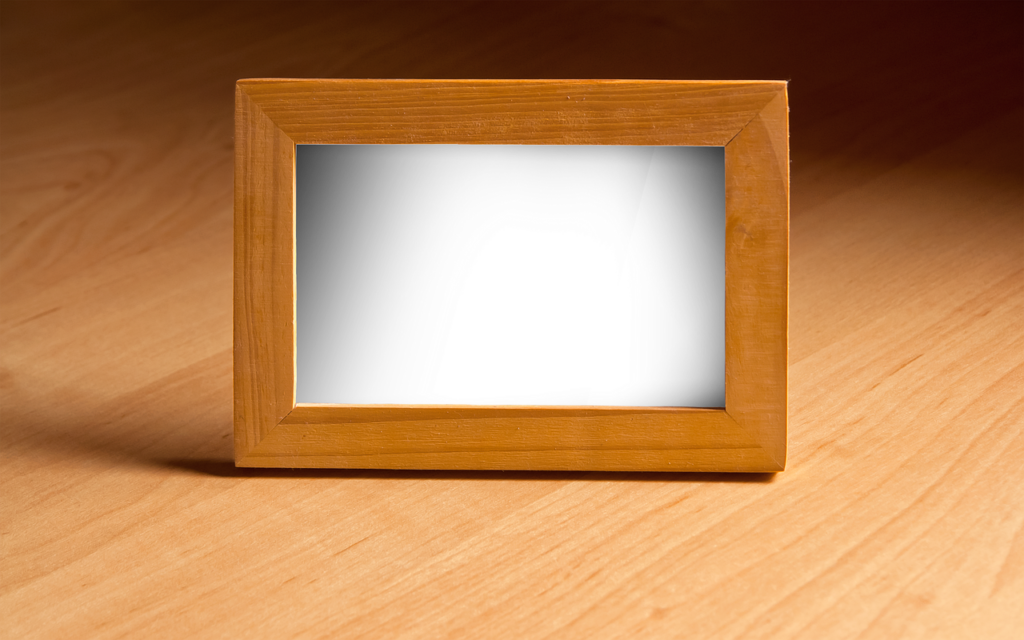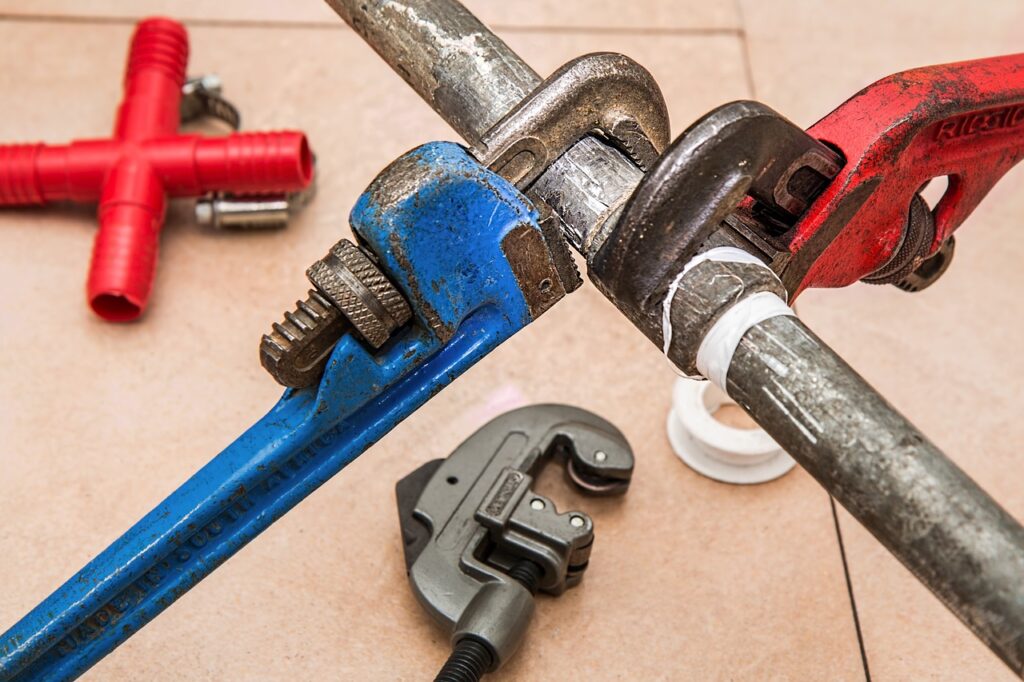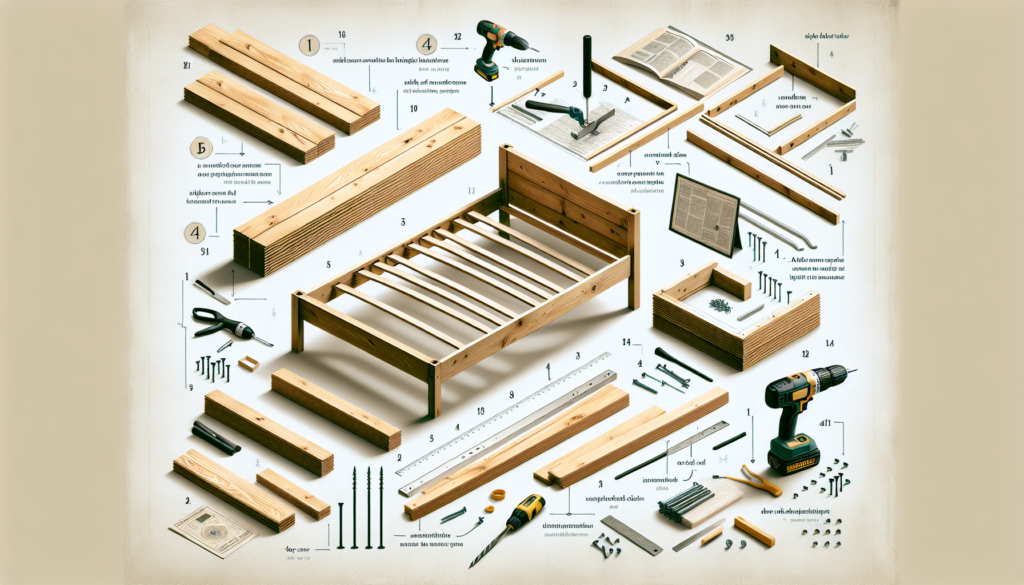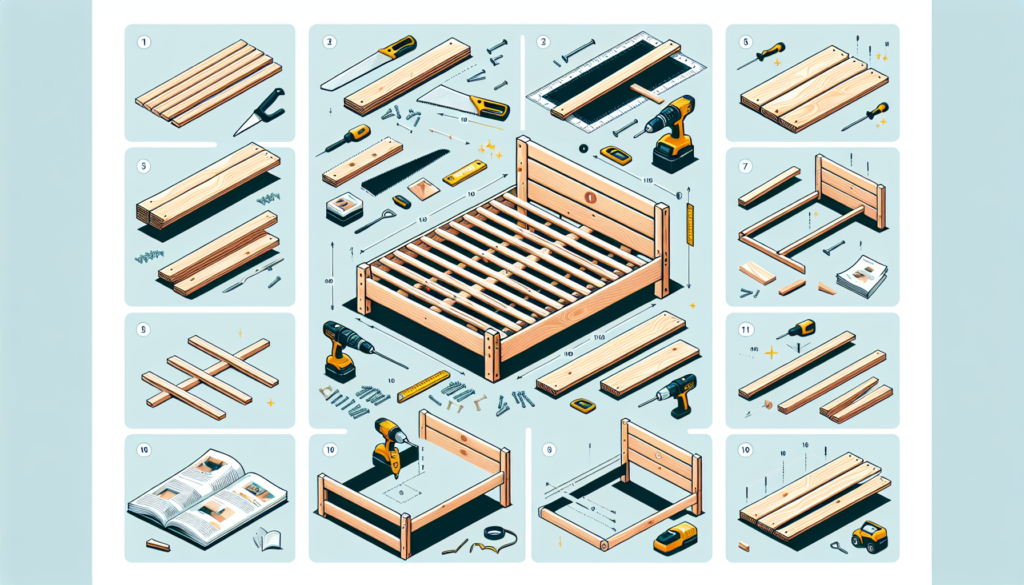So, you’re contemplating whether or not you have the skills and ability to construct a wooden bed frame all on your own. Well, we have good news for you – it’s absolutely possible! Building a wooden bed frame yourself can not only save you some money, but it can also be an incredibly rewarding and fulfilling project. In this article, we’ll explore the factors to consider, the materials you’ll need, and provide you with some essential tips to help you successfully embark on this DIY adventure. By the end, you’ll feel confident and excited about transforming your bedroom with a handmade wooden bed frame that’s uniquely yours.
Materials needed
To build a wooden bed frame, you will need the following materials:
Wood
Choosing the right type of wood is crucial for the durability and appearance of your bed frame. Opt for sturdy and sturdy woods such as oak, pine, or maple. These woods are readily available and can withstand the weight and strain of a bed frame.
Screws or nails
You’ll need screws or nails to join the different wooden components of the bed frame securely. Make sure to use appropriate sizes and types that can hold the weight of the bed without compromising its stability.
Wood glue
Wood glue helps strengthen the joints and provides added stability to the bed frame. It is essential to use a high-quality wood glue that can bond the surfaces firmly together.
Saw
A saw is a necessary tool for cutting the wooden pieces to the desired lengths and shapes. A power saw, such as a circular saw or a miter saw, will make the job quicker and more accurate.
Sander
A sander helps smoothen the rough edges and surfaces of the wood, giving your bed frame a polished and professional look. Consider using an orbital sander or sanding blocks for efficient sanding.
Measuring tape
Accurate measurements are vital to ensure that the bed frame fits your mattress and room dimensions perfectly. A measuring tape will help you measure the lengths and widths accurately.
Drill
A drill is needed to create holes for screws or nails, making it easier to assemble the bed frame. Invest in a reliable cordless drill to make the process more convenient.
Clamps
Clamps are necessary to hold the wooden pieces together firmly while allowing the glue to dry or while securing the joints. They provide stability and ensure accurate alignment during assembly.
Paint or stain
Aesthetics play a significant role in the final look of your bed frame. You can either paint the wood to match your room decor or choose to enhance the natural beauty of the wood by applying a stain. Consider using a protective topcoat to prevent damage and increase the bed frame’s longevity.
Choosing the right wood
Types of wood to consider
When selecting wood for your bed frame, you have several options to consider. Popular choices include oak, pine, maple, and birch. Each type of wood has its unique characteristics, so understanding their properties is essential.
Commonly used wood for bed frames
Among the different wood options, oak and maple are commonly used for bed frames due to their strength, durability, and attractive grain patterns. They can withstand the weight of the mattress and provide long-lasting support.
Factors to consider when selecting wood
When choosing the wood for your bed frame, consider factors such as your budget, personal preference for the wood grain, and the overall aesthetic you want to achieve. Additionally, take into account the wood’s hardness, stability, and resistance to moisture to ensure the longevity of your bed frame.

Design considerations
Bed frame styles
Before proceeding with building your bed frame, decide on the style that suits your room and personal taste. Some popular styles include platform beds, sleigh beds, and canopy beds. Research different designs and choose one that complements your bedroom decor.
Size considerations
The size of your bed frame is crucial to ensure a proper fit for your mattress and to determine the space it will occupy in your room. Consider the size of your mattress, such as twin, full, queen, or king, and choose the corresponding bed frame dimensions.
Headboard options
A headboard adds elegance and character to a bed frame. Decide whether you want a standalone headboard or a built-in one. You can choose from various headboard styles, such as upholstered, wooden, or metal, to match your personal style and bedroom decor.
Storage options
If you need extra storage space, consider incorporating storage compartments into your bed frame design. Options include under-bed drawers or shelves on the headboard or sides of the bed frame. This feature can be particularly useful in smaller bedrooms.
Budget considerations
Building your own bed frame allows you to save money compared to buying a pre-made one. However, keep in mind that the final cost will depend on the type and quality of wood, additional materials, and any customization you choose. Set a realistic budget before you start and plan accordingly.
Taking accurate measurements
Standard bed frame dimensions
It is essential to be familiar with the standard dimensions of bed frames to ensure a proper fit. Twin-size bed frames typically measure 39 inches by 75 inches, while full-size frames are usually 54 inches by 75 inches. Queen-size frames measure 60 inches by 80 inches, and king-size frames measure 76 inches by 80 inches.
Measuring the room
Before building your bed frame, measure your room to determine the available space. Consider the layout, any obstructions, and ensure there is enough clearance for easy movement around the bed.
Accounting for mattress size
The dimensions of your mattress will dictate the size of the bed frame. Measure the length and width of the mattress, including any additional depth from pillow-top or memory foam layers, to determine the appropriate dimensions for your bed frame.
Accounting for bedding
Take into account the thickness of your bedding, including mattress toppers, mattress protectors, and fitted sheets. This will help you calculate the overall height of your bed frame and ensure it remains comfortable and practical.

Assembling the bed frame
Preparation
Before assembling the bed frame, ensure you have all the necessary tools and materials readily available. Read through the assembly instructions or plans to understand the process thoroughly. It is also essential to work in a well-ventilated area and use appropriate safety gear, including goggles and gloves.
Cutting the wood
Using the measurements and plans, cut the wood pieces to the appropriate lengths and shapes using a saw. Take your time to double-check the measurements and make precise cuts. Remember to label each piece to avoid confusion during assembly.
Sanding the wood
Sand all the cut wooden pieces, as well as any existing rough edges or surfaces, to achieve a smooth finish. This can be done using a power sander or sanding blocks. Take care to sand the wood evenly and remove any splinters or imperfections.
Assembling the frame
Start by assembling the main frame structure using screws or nails at the designated joints. Follow your plans or instructions carefully to ensure accurate alignment. It may be helpful to use clamps to hold the pieces together while you secure them.
Securing the joints
Once the main frame is assembled, reinforce the joints with wood glue. Apply wood glue evenly to the surfaces before securing them with screws or nails. Wipe off any excess glue with a damp cloth to avoid visible residue.
Attaching the headboard
If your bed frame includes a headboard, follow the instructions or plans to attach it securely. Depending on the design, this may involve additional screws, nails, or brackets. Take your time to align the headboard properly before fastening it to the frame.
Adding any storage components
If you opted for storage options, such as drawers, now is the time to install them. Follow the specific instructions for each component, ensuring they are securely attached to the bed frame.
Applying finish
Once the assembly is complete, apply the desired finish to the bed frame. You can choose to paint it in a color that complements your room decor or apply a stain to enhance the natural beauty of the wood. Consider adding a protective topcoat to prolong the life of the finish.
Common challenges and how to overcome them
Aligning the pieces
One common challenge when assembling a bed frame is ensuring proper alignment of the wooden pieces. To overcome this, use clamps to hold the pieces together while securing the joints. Take your time to adjust and align the pieces before tightening the screws or nails.
Ensuring stability
The stability of the bed frame is crucial for safety and comfort. To ensure stability, double-check the measurements and cuts of each wooden piece before assembly. Use wood glue to reinforce the joints, and consider adding additional support brackets or cross beams if needed.
Rectifying mistakes
Mistakes can happen during the assembly process. If you make a mistake, don’t panic. Assess the problem and determine the best course of action. You may need to remove and replace a piece, or use wood filler to fill any gaps or holes. Take your time and be patient to rectify the mistake effectively.
Dealing with uneven flooring
If your bedroom has uneven flooring, it can affect the stability of the bed frame. To address this, you can add furniture pads or shims under the legs of the bed frame to level it. This will prevent any wobbling or rocking when sleeping or moving on the bed.
Managing wood expansion and contraction
Wood expands and contracts with changes in temperature and humidity, which can affect the stability of the bed frame over time. To mitigate this, leave small gaps between the wooden pieces during assembly to allow for natural expansion. Using slotted brackets can also provide flexibility for wood movement.

Safely using power tools
Understanding tool operation manuals
Before using any power tools, familiarize yourself with their operation manuals. Read the instructions thoroughly to understand proper usage, safety precautions, and maintenance requirements for each tool.
Wearing proper safety gear
When using power tools, always wear appropriate safety gear, including safety glasses or goggles, gloves, and ear protection if necessary. This will help protect you from potential injuries or accidents.
Using clamps to secure workpieces
Clamps are valuable tools for securing workpieces during cutting, drilling, or assembly. They provide stability and minimize the risk of slipping or misaligning the wood. Always use clamps when necessary, following the manufacturer’s instructions.
Practicing proper technique
When using power tools, practice proper technique and maintain a steady grip. Keep your hands away from the cutting area and always use push sticks or guides as a safety precaution. If you are unsure about proper technique, seek guidance from a professional or experienced woodworker.
Keeping work area clean and organized
Maintain a clean and well-organized work area to minimize potential hazards. Clear away any debris, sawdust, or other clutter before using power tools. This not only promotes safety but also allows for more efficient work.
Using tools with built-in safety features
Many power tools come with built-in safety features, such as blade guards or safety switches. Familiarize yourself with these features and use them accordingly. Never tamper with or remove safety features to ensure your safety.
Seeking professional guidance if unsure
If you are unsure about using a particular power tool or performing a specific task, it is always best to seek professional guidance or assistance. There are woodworking classes or workshops available where you can learn proper techniques and safety precautions.
Finishing options
Painting the bed frame
Painting the bed frame allows you to customize its appearance and match your room decor. Choose a high-quality paint suitable for wood surfaces. Apply multiple coats for an even finish and allow sufficient drying time between each coat.
Staining the wood
Staining the wood enhances its natural beauty and grain pattern. Choose a wood stain that complements your desired aesthetic. Apply the stain evenly using a brush or cloth, following the manufacturer’s instructions. Wipe off any excess stain and allow it to dry completely.
Applying varnish or sealant
To protect the wood and increase its durability, consider applying a varnish or sealant. These products provide a protective layer against moisture, scratches, and UV damage. Follow the instructions on the product for proper application and drying times.
Considering natural finishes
If you prefer a more natural look, you can choose to leave the wood unfinished or apply a clear coat. This highlights the natural beauty of the wood while providing some protection against wear and tear. Make sure to sand the wood thoroughly before applying the clear coat to achieve a smooth finish.

Maintaining and prolonging the life of the bed frame
Regular cleaning
Clean your bed frame regularly to remove dust and debris. Use a soft cloth or a brush attachment on a vacuum cleaner to gently wipe or brush off any dirt. Avoid using harsh chemicals or abrasive cleaners that may damage the finish.
Preventing moisture damage
To prevent moisture damage, be cautious of spills or excessive moisture around the bed frame. Immediately wipe up any spills and consider using a mattress protector to prevent liquids from seeping into the frame. Keep the room adequately ventilated to reduce humidity.
Repairing minor damages
Over time, your bed frame may experience minor damages such as scratches or dents. Repair these by using wood filler, sanding the area, and applying a touch-up finish. This will keep your bed frame looking pristine and help maintain its structural integrity.
Reinforcing weak joints
Periodically check the bed frame’s joints for signs of weakness or loosening. If you notice any, reinforce them by adding additional screws or nails. Applying wood glue to the joints can also help strengthen them. Addressing weak joints promptly will prevent further damage to the frame.
Replacing worn-out components
If any components of your bed frame become worn-out or damaged beyond repair, replace them promptly. This may include slats, drawers, or headboard attachments. Maintaining the structural integrity of the frame ensures long-lasting use.
Protecting the frame during transportation
If you need to move or transport your bed frame, take precautions to protect it from damage. Disassemble the frame carefully, marking each piece for easy reassembly. Use moving blankets or wraps to protect the wood during transportation. Take extra care when handling and loading the pieces into a vehicle.
Conclusion
Building your own wooden bed frame can be a rewarding and fulfilling DIY project. Not only does it provide a sense of accomplishment, but it also allows you to customize the design according to your preferences. With the right materials and tools, you can create a durable and long-lasting bed frame that perfectly suits your needs.
By following the proper design considerations, taking accurate measurements, and carefully assembling the frame, you can overcome common challenges associated with building a bed frame. Remember to prioritize safety when using power tools and choose the right finishing options to enhance the appearance and protect the wood.
Maintaining and prolonging the life of your bed frame will ensure its durability and longevity. By regularly cleaning, preventing moisture damage, and addressing any minor repairs, you can enjoy the comfort and stability of your bed frame for years to come.
Building your bed frame not only allows you to save money compared to purchasing a pre-made one, but it also enhances your woodworking skills and knowledge. The satisfaction of creating something functional and beautiful with your own hands is unparalleled. So why not embark on this DIY project and enjoy the benefits of having a custom-made bed frame that fits your unique style and preferences?


